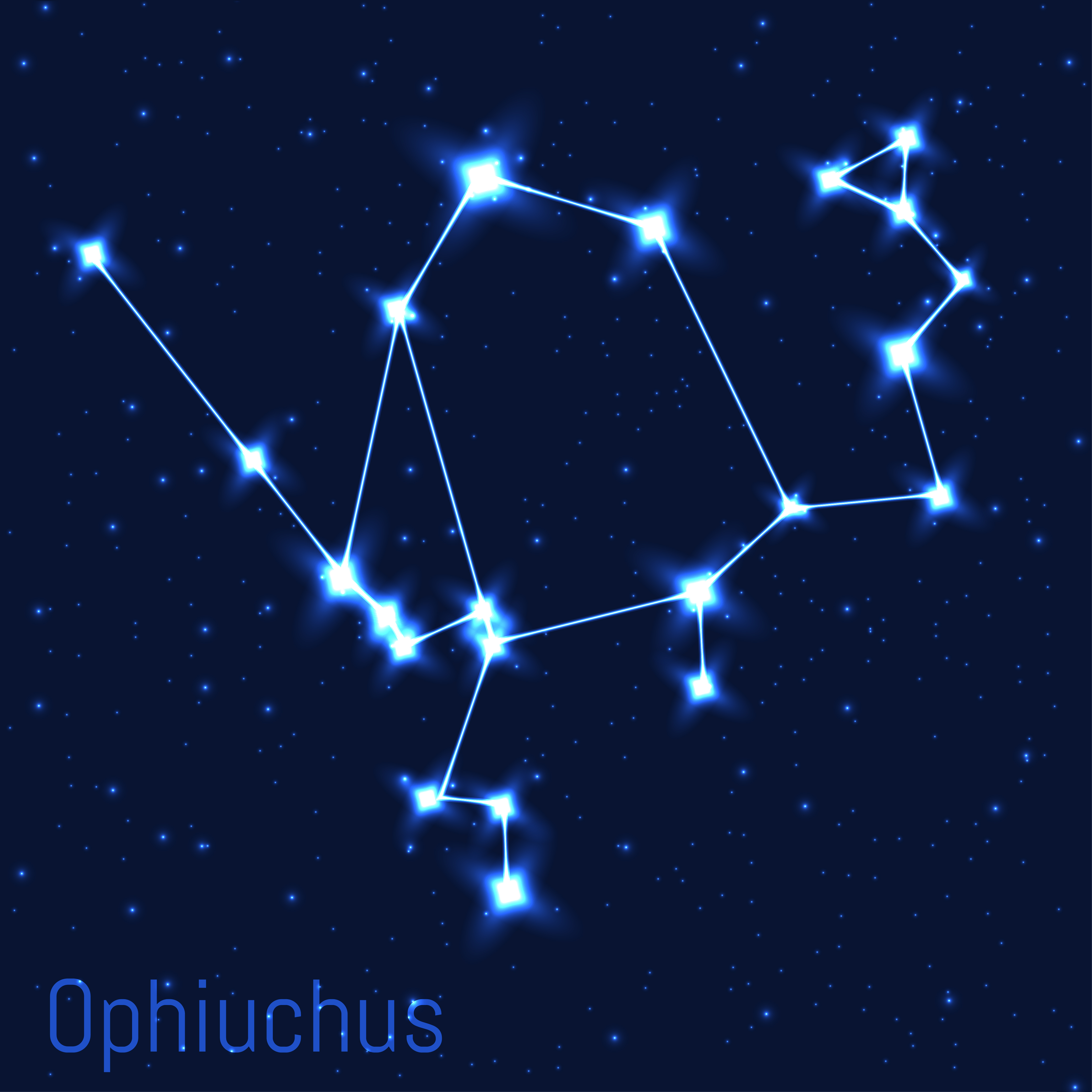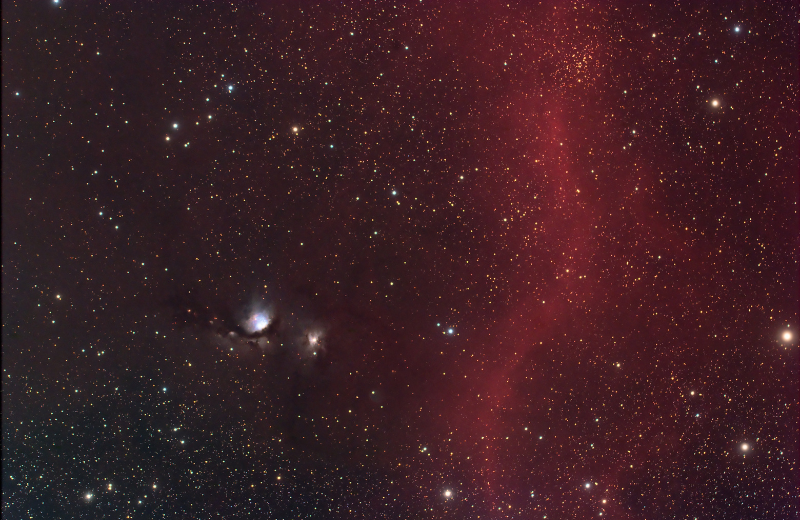Ophiuchus is the so-called “forgotten” zodiac constellation, giving it a fascinating story to tell. This guide shares everything you need to know about what makes this constellation so special and how you can spot it in the night sky.
Jump to:
Recommended for you!
Best SellersWhat is the Ophiuchus Constellation?
Ophiuchus, pronounced “oh-FEE-you-kuss,” is a constellation that sits along the ecliptic, the path the Sun travels through the sky. Known as the “Serpent Bearer,” it’s often depicted as a man holding a large snake, which winds its way around his body. The name Ophiuchus comes from the Greek words “ophis,” meaning snake, and “cheir,” meaning hand. So, what does this mean for stargazers and astrology enthusiasts? Well, Ophiuchus’s position among the zodiac constellations has stirred debates for years.
The definition of Ophiuchus as a constellation can be traced back to ancient Greek times, but it didn’t quite make the cut into the traditional zodiac signs that astrologers use today. Despite being overlooked in the 12-sign zodiac system, it’s a genuine constellation full of wonder and intrigue.
What Does Ophiuchus Look Like?

If you’re trying to identify Ophiuchus in the sky, you’ll be searching for a constellation that stretches across a significant area near the celestial equator. Ophiuchus sits between Scorpius and Sagittarius and appears to be a man wrestling a serpent, split into two parts: the snake’s head (Serpens Caput) and the tail (Serpens Cauda).
The constellation is best viewed in the summer months in the Northern Hemisphere. It has a wide shape that can make it tricky to identify, but once you find the snake winding around the serpent bearer, you’ll know you’ve found Ophiuchus.
How Far is the Ophiuchus Constellation from Earth?
Ophiuchus isn’t just visually impressive; it’s also far-reaching. The constellation covers an area of over 948 square degrees in the sky, making it one of the larger constellations. As for distance, some of the stars that make up Ophiuchus are hundreds of light-years away. The brightest star in Ophiuchus, Rasalhague, sits about 48 light-years from Earth and marks the serpent bearer’s head.
The Ophiuchus Constellation Myth

Like many constellations, Ophiuchus is steeped in mythology. The story of Ophiuchus is often linked to Asclepius, the ancient Greek god of medicine. According to Greek mythology, Asclepius discovered the secret of immortality when he saw a snake bringing another snake back to life using an herb. This powerful symbol of healing and rebirth is why Ophiuchus is depicted holding a serpent.
In mythology, Asclepius’s medical knowledge was so advanced that it threatened the balance between life and death. Fearing his abilities, Zeus struck him down with a thunderbolt but honoured him by placing his image in the sky as the constellation Ophiuchus.
Ophiuchus’ Stars
Although not as well-known as other constellations, Ophiuchus is home to several fascinating stars that form its snake-bearing figure:
- Rasalhague – The brightest star in Ophiuchus, Rasalhague, translates to “Head of the Serpent Collector.” It is a white giant star located around 48 light-years away from Earth, marking the head of the serpent bearer.
- Sabik – Another significant star, Sabik, is a binary star system situated roughly 92 light-years away. It adds to the constellation’s unique shape, appearing along the serpent that Ophiuchus holds.
- Cebalrai – This red giant lies around 82 light-years from Earth and contributes to Ophiuchus's snake-like form. Its distinctive glow adds to the constellation's celestial beauty.
Ophiuchus also contains several binary stars and red giants, adding complexity to its appearance. The pronunciation of these star names, such as Rasalhague and Sabik, may seem tricky, but they’re well worth learning to impress fellow astronomy enthusiasts!
Nebulae and Galaxies in the Ophiuchus Constellation

Ophiuchus isn’t just about stars; it also contains fascinating deep-sky objects. One of the most notable is the Barnard’s Star, one of the closest stars to our Solar System. You’ll also find several nebulae and globular clusters, like Messier 10 and Messier 12, which are best observed with a telescope.
Finding Ophiuchus in the Sky
Ophiuchus can be seen from both the Northern and Southern Hemispheres, but it’s best viewed in the summer months for those in the north. The clearest visibility occurs from June to August, when Ophiuchus reaches its highest point in the night sky, making it easier to locate during the evening hours.
Locating Ophiuchus
To find Ophiuchus, start by identifying the constellations of Scorpius and Sagittarius, which are prominent features in the summer sky. Ophiuchus lies between them and forms a large, distinctive shape of a man wrestling a serpent. Using a star map or an astronomy app can make it easier to pinpoint this intriguing constellation and understand the layout of the serpent entwining around the serpent bearer.
Viewing Ophiuchus with Binoculars or a Telescope
- Using binoculars: Although some of Ophiuchus’s brighter stars are visible to the naked eye under dark skies, binoculars can help you pick up on its fainter stars and provide a clearer view of its full expanse.
- Using a telescope: With a telescope, you can explore some of Ophiuchus’s fascinating deep-sky objects, such as the globular clusters Messier 10 and Messier 12. These clusters offer an exciting glimpse into the constellation’s celestial beauty and complexity.
Best Viewing Conditions
For the best viewing experience, find a spot with minimal light pollution and wait for a clear, moonless night. Under these conditions, Ophiuchus will be much more defined, and the serpent entwining around the figure of the serpent bearer will be easier to distinguish. With Scorpius and Sagittarius as your guides, Ophiuchus becomes an exciting part of the summer sky to explore.
Recommended for you!
Best SellersFun Facts About Ophiuchus
- Ophiuchus is often referred to as the “forgotten zodiac” because it’s part of the zodiac belt but isn’t recognised in traditional astrology.
- It’s one of the few constellations associated with a real-life figure, Asclepius, the ancient healer.
- The constellation holds significance in both astronomy and astrology, despite not being part of the usual 12 zodiac signs.
- It symbolises healing, transformation, and knowledge, themes that resonate in its astrological interpretations.
Study Astronomy for £29
If the Ophiuchus constellation has sparked your curiosity, why not explore more about the stars and the cosmos with our Astronomy Diploma Course at Centre of Excellence? This course offers a detailed understanding of the universe, from constellations and star types to the fundamentals of space observation. Perfect for all budding astronomers, the course is available for a discounted price of £29.













